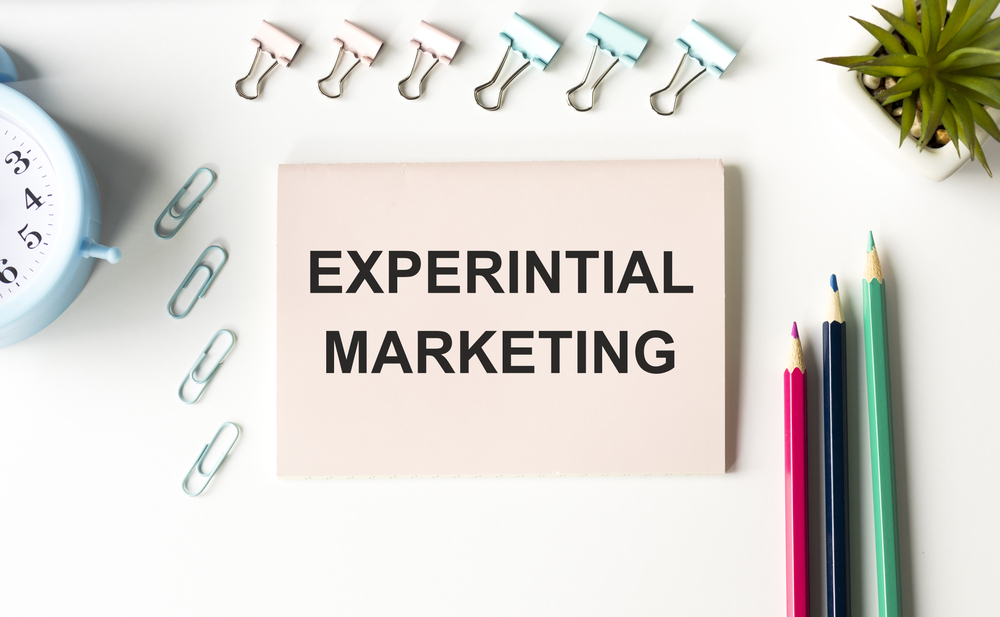Beyond the Prescription: Monthly Touchpoints, Titration, and Comprehensive Care
GLP-1 medications like semaglutide and tirzepatide can deliver meaningful weight loss—clinical trials demonstrate ~15–22% average weight loss over ~68–72 weeks, depending on medication and dose. But the hard part isn’t getting a prescription—it’s accessing the longitudinal care these medications require. Effective GLP-1 therapy demands careful dose escalation, side-effect management, regular lab monitoring, and nutrition support that prevents muscle loss and keeps patients on therapy safely.
LifeMD’s weight management program was built for that reality: monthly touchpoints, data-driven titration, authentic FDA-approved medications through pharmaceutical partnerships, and comprehensive oversight delivered through a platform designed for chronic disease management.
Why GLP-1s Need More Than a Prescription
GLP-1 medications work by mimicking a hormone that regulates appetite and blood sugar, but their effectiveness depends on proper clinical management:
Titration is essential. Patients begin with low doses that gradually increase every four weeks over several months, allowing the body to adjust and minimizing gastrointestinal side effects. Rushing titration drives GI side effects and drop-off; holding at the current dose is often safer.
Side effects require active management. Nausea, constipation, diarrhea, and fatigue are common during dose escalations. More serious concerns—gallbladder issues, pancreatitis risk, changes in heart rate—require clinical judgment about whether to continue, reduce, or discontinue medication. Providers need protocols for managing these symptoms.
Labs anchor safety. Monitoring CMP, renal function, and A1C as indicated—typically every 3–6 months, or more frequently if clinically warranted—helps ensure medications are working safely and effectively.
Nutrition is protective. GLP-1s suppress appetite dramatically. Without proper guidance, patients risk inadequate protein intake and muscle loss. Prioritizing protein, hydration, and resistance training helps mitigate lean-mass loss while maximizing fat loss.
Monthly Touchpoints as Clinical Infrastructure
When GLP-1 weight management medications gained widespread attention, LifeMD’s platform was already designed for exactly what these treatments require: monthly provider touchpoints delivered through video consultations.
“We built a platform that was built perfectly for that, which was a monthly touch point that needs to happen with that patient and being able to titrate medication,” says Jessica Friedeman, Chief Marketing Officer at LifeMD.
The monthly structure matches the clinical needs of GLP-1 therapy. Most titration protocols call for dose increases every four weeks. Side effects often emerge around dose changes. Lab work happens every few months to monitor metabolic response.
What Happens at Each Monthly Visit:
- Tolerance and progress review
- Escalate or hold dose (every four weeks titration)
- Side-effect plan (anti-nausea meds, diet, hydration)
- Review interval labs and adjust plan
- Protein-focused nutrition guidance
- Coordinate with other clinicians as needed
“Being able to treat both synchronously through a video-based consult as well as asynchronously through that message-based consult” means urgent questions between scheduled appointments can be addressed through messaging, while complex clinical decisions happen via video.
Authentic Medications & Access Pathways
The GLP-1 space includes FDA-approved branded medications (Wegovy, Ozempic, Zepbound, Mounjaro) and various compounded alternatives. LifeMD’s approach prioritizes authentic, FDA-approved medications through strategic pharmaceutical partnerships.
In September 2025, LifeMD announced a collaboration with Novo Nordisk to provide access to Ozempic (semaglutide) at $499 per month for eligible patients (as of September 30, 2025). Ozempic is FDA-indicated for type 2 diabetes and may be used off-label for weight management when clinically appropriate; Wegovy (semaglutide 2.4 mg) is indicated for chronic weight management. LifeMD integrates with manufacturer pharmacy programs (NovoCare and Lilly/Gifthealth) to streamline access to Wegovy and Zepbound (tirzepatide) where clinically appropriate and permitted by law.
Insurance-based Care:
LifeMD accepts commercial insurance for eligible services (as of mid-2024; availability varies by state). For patients with coverage, this means working through insurance benefits, prior authorization, and coordination with insurance-contracted pharmacies.
Insurance, Eligibility, and Access
Clinical Eligibility Assessment:
Not every patient is an appropriate candidate for GLP-1 therapy. Medical guidelines and FDA labeling typically indicate these medications for adults with BMI ≥30, or BMI ≥27 with weight-related comorbidities such as hypertension or type 2 diabetes. LifeMD providers conduct thorough assessments to determine clinical appropriateness, including review of contraindications and patient medical history.
Insurance Navigation:
Many commercial insurance plans cover GLP-1 medications for diabetes management but not for weight management alone. Prior authorization requirements can be extensive, and patients often face high out-of-pocket costs even with coverage. LifeMD’s program addresses this through insurance acceptance where permitted and pharmaceutical partnerships that provide discounted cash-pay pricing for patients whose insurance doesn’t cover medications or who prefer to pay out-of-pocket.
What Comprehensive Care Actually Looks Like: A Patient Journey
Initial Consultation (Week 0):
A video appointment with a LifeMD-affiliated provider reviews medical history, current medications, weight loss goals, previous weight management attempts, and contraindications. The provider orders baseline labs—metabolic panel, kidney function, and A1C if applicable/recommended.
Treatment Planning (Week 2–4):
If the patient is cleared for treatment, the provider discusses medication options based on insurance coverage and pharmaceutical partnerships, explains the specific titration schedule (typically starting at lowest dose with increases every four weeks), reviews potential side effects and management strategies, and sets realistic expectations for weight loss timeline.
Monthly Follow-ups (Weeks 4, 8, 12, 16…):
Scheduled video consultations, if/as preferred by the patient or required by the care provider, assess tolerance, address side effects, review any interval lab work, adjust dosages per protocol or hold if clinically indicated, provide nutrition guidance, and coordinate ongoing care. Between appointments, patients can message their provider with questions.
3–6 Month Lab Monitoring:
Periodic lab work monitors kidney function, electrolytes, blood sugar, and other relevant markers to ensure medications are working safely.
Maintenance Phase:
Once patients achieve target weight loss goals, ongoing monthly touchpoints continue to support weight maintenance, manage any emerging issues, and provide long-term medical oversight.
Retention Over Hype
LifeMD’s weight management program focuses on retention and long-term patient relationships rather than rapid patient acquisition at any cost. The strategy reflects a view that patients who receive authentic medications through transparent partnerships and comprehensive medical oversight are more likely to continue treatment and achieve sustainable results.
Weight management is a chronic condition requiring ongoing treatment. Most patients who discontinue GLP-1 medications regain significant weight. The clinical goal isn’t just initial weight loss—it’s sustained weight management over years, which requires sustained medical support.
The platform maintains high patient satisfaction—98% as of June 2025—and provider ratings of 4.9 out of 5 as of June 2025, suggesting patients value the care experience.
Scaling Clinical Excellence
By August 2025, LifeMD had crossed 70,000 weight management patients. The platform now supports ongoing care for a substantial patient population across all 50 states, with providers conducting hundreds of consultations daily.
Scaling this volume of clinical care while maintaining quality requires sophisticated infrastructure:
Full-time Affiliated Providers:
LifeMD’s 50-state medical group is staffed primarily by W-2 providers (not independent contractors), ensuring deep familiarity with protocols, consistent care standards, and dedicated focus on the platform’s patients.
Proprietary EHR and Scheduling:
The technology platform is designed specifically for subscription-based longitudinal care, with built-in medication titration protocols, automated appointment reminders, integrated lab ordering, and clinical decision support tools.
Pharmacy Coordination:
Direct integration with pharmaceutical partners’ pharmacies (NovoCare, Gifthealth) plus the company’s affiliated pharmacy enables streamlined fulfillment and reduces the administrative burden on patients.
Patient Care Center:
A U.S.-based team handles scheduling, insurance verification, medication coordination, and patient education, allowing clinical providers to focus on medical decision-making.
These operational capabilities mean LifeMD can deliver comprehensive GLP-1 management at scale—something that’s difficult for traditional brick-and-mortar practices to replicate given the time and coordination requirements.
Safety & Indications: What Patients Should Know
GLP-1 receptor agonists and dual agonists are indicated for adults with obesity (BMI ≥30) or overweight (BMI ≥27) with at least one weight-related comorbidity such as hypertension or type 2 diabetes, and for type 2 diabetes management per individual product labeling.
These medications carry a boxed warning for thyroid C-cell tumors observed in rodent studies. They are contraindicated in patients with a personal or family history of medullary thyroid carcinoma (MTC) or Multiple Endocrine Neoplasia syndrome type 2 (MEN2). Additional risks include pancreatitis, gallbladder disease, acute kidney injury, and diabetic retinopathy complications. Use should be avoided in pregnancy.
Use of GLP-1 medications is as clinically appropriate and where permitted by law. Patients should discuss risks, benefits, and individual suitability with a licensed healthcare provider before starting treatment.# LifeMD’s Comprehensive Approach to GLP-1 Weight Management
The Bottom Line
Platforms like LifeMD represent one approach to the GLP-1 access challenge: using technology to reduce the cost of frequent provider touchpoints, negotiating pharmaceutical partnerships to lower medication costs, and building subscription-based models that align provider incentives with patient retention and long-term outcomes.
“We’re trying to invest in this in the right way,” Friedeman says. “We’re trying to figure out a more sustainable model to accessible, high-quality healthcare.”
The core clinical insight seems durable regardless of how the market evolves: effective GLP-1 therapy requires more than a prescription. It requires consistent medical oversight, responsive dose adjustments, side-effect management, lab monitoring, and nutrition support—delivered through a care model designed for longitudinal relationships rather than episodic visits.
For patients who lack access to that level of support through traditional healthcare channels, telehealth platforms built specifically for chronic disease management offer a clinically sound alternative.
Find a Home-Based Business to Start-Up >>> Hundreds of Business Listings.















































